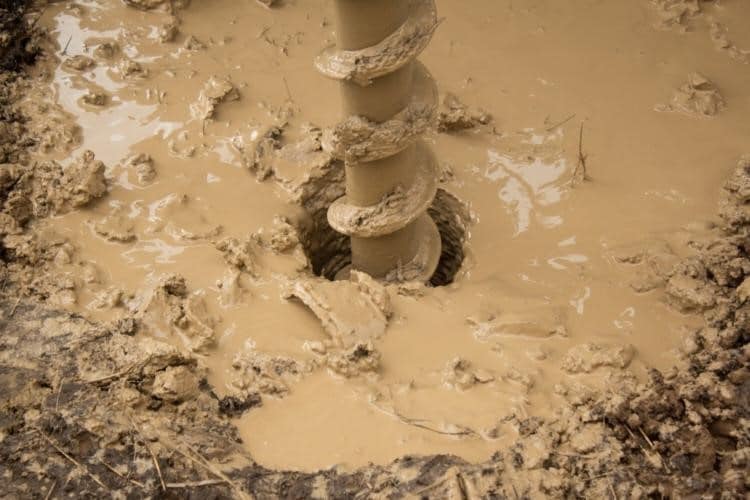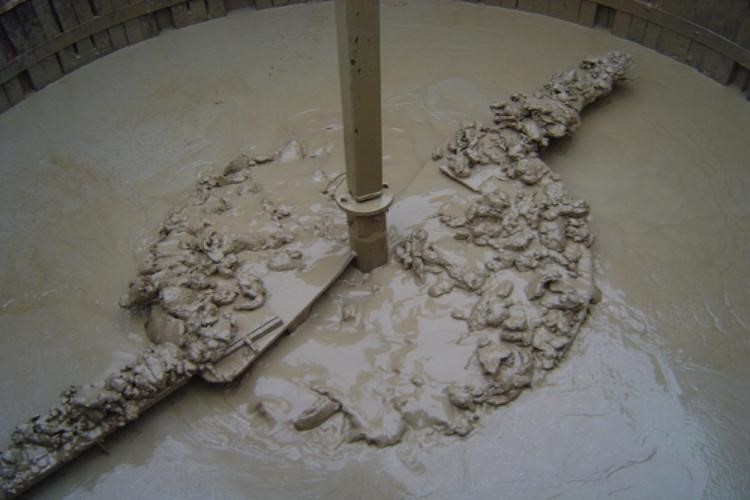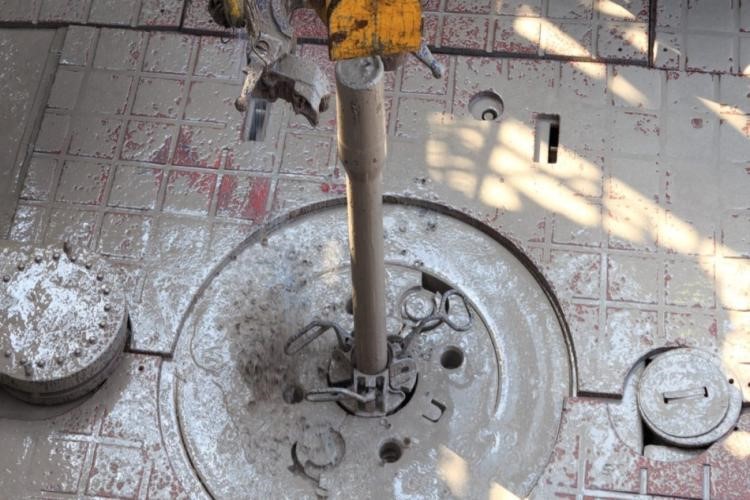Drilling fluids also referred to as drilling mud, are typically made from a mixture of materials such as bentonite clay, polymers, weighing agents, and water or oil. The specific composition of drilling fluid can vary based on the geological formations being drilled and the type of drilling being conducted. The purpose of drilling mud is to lubricate and cool the drill bit, suspend the cuttings, and maintain pressure in the wellbore to prevent collapse and maintain stability. Keep reading the following article for further information about drilling mud and fluids.
The Purpose of Drilling Fluids
Drilling fluids or drilling muds are critical components of the gas and oil drilling process. During drilling, the drill bit rotates rapidly and cuts through rocks which creates rock fragments known as drill cuttings. These cuttings need to be removed from the wellbore to prevent them from clogging the drill string, which can cause damage to the equipment and lead to safety issues.
There are many purposes behind using drilling mud during the drilling process. One of the primary purposes is to cool the drill bits which reduces friction and prevents the bit from overheating and becoming damaged. Additionally, drilling muds transport the drill cuttings to the surface where they can be removed and processed.
Another important purpose of drilling fluids is to maintain the stability of the wellbore. They exert pressure on the walls of the well which prevents the well from collapsing and helps to prevent blowouts. Drilling muds also lubricate the drill string, reducing friction and wear on the equipment.
In some cases, drilling muds can be designed to exert pressure on the formation being drilled to control the flow of fluids into the wellbore and to prevent blowouts. They can also be used to seal the wellbore to prevent the flow of fluids between different formations or zones.
Types of Drilling Fluids
There are several types of drilling mud used in the oil and gas industry, each with its own unique properties and advantages. The following are some of the most common types of drilling mud:
Oil-based Mud (OBM)
Oil-based muds are made from diesel or mineral oil and are used in deep wells with high temperatures. OBM is more expensive than WBM but has better lubricating properties and can tolerate higher temperatures.
Air and Foam-based Mud
Air and foam-based muds use air or nitrogen to create a foam that carries the drill cuttings to the surface. These types of drilling fluids are used in wells where the formation is highly porous and prone to caving.
High-density Muds
High-density muds are used in wells with high pressures and temperatures. They are made from barite and other weighing agents and are used to control the pressure in the well and prevent blowouts.
Non-damaging Muds
Non-damaging muds are designed to prevent damage to the formation being drilled. They are typically used in wells where the formation is susceptible to damage from drilling mud.
The Steps of Drilling Fluids
The steps and details of how drilling fluid works are listed below:
- In the first step, drilling fluids are pumped down the drill string and out of the drill bit which helps to cool the drill bit and reduce friction.
- Next, the drill cuttings are carried to the surface. As the drill bit cuts through rock, it creates drill cuttings that are carried to the surface by the drilling fluids.
- The next step is about maintaining wellbore stability. Drilling muds exert pressure on the walls of the well leading to stability. This prevents the well from collapsing and reduces the risk of blowouts.
- Drilling mud acts as a lubricant for the drill string. Lubricating the drill string reduces friction and keeps the equipment safe from wear and tear.
- Next comes controlling formation pressure. to prevent blowouts and control the flow of fluids into the wellbore, drilling muds can be designed to exert pressure on the formation being drilled.
- Finally, the wellbore should be sealed to prevent the flow of fluids between different zones or formations, and this happens when using drilling fluids.
The Ingredients of Drilling Fluids
There are several ingredients that can make drilling mud work better depending on the specific needs of the operation. Some of these ingredients include:
Bentonite
Bentonite is a mineral clay and is often used to thicken drilling muds and improve their viscosity which helps to remove cuttings from the well and maintain the integrity of the borehole.
Polymers
These synthetic materials can be added to drilling fluid to control its properties. Examples of polymers include polyacrylamide, xanthan gum, and Guam gum.
Barite
barite is a mineral that is often added to drilling fluids to increase their density.
Surfactants
The purpose of using these chemicals in the drilling process is to reduce the surface tension and improve the wetting properties, which in turn, helps to enhance drilling efficiency and reduce the risk of wellbore damage.
Lubricants
To reduce friction and wear on the drill bit and other tools, they use different substances like lubricants.
Conclusion
In general, drilling fluids play a crucial role in the drilling process of oil and gas wells. It serves multiple purposes such as lubricating the drill bit, cooling and cleaning the drill string, and controlling the pressure in the wellbore. The precise composition of the drilling fluid depends on the specific drilling conditions and the geological formations encountered. The proper selection and management of drilling muds can significantly enhance the efficiency and safety of the drilling operation.







